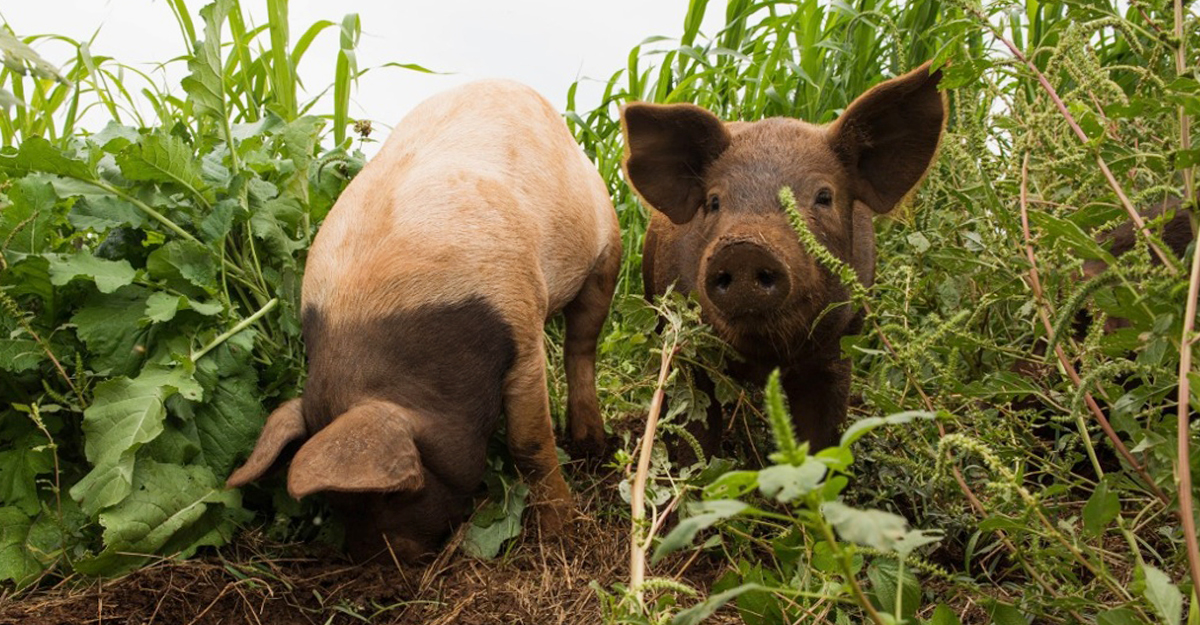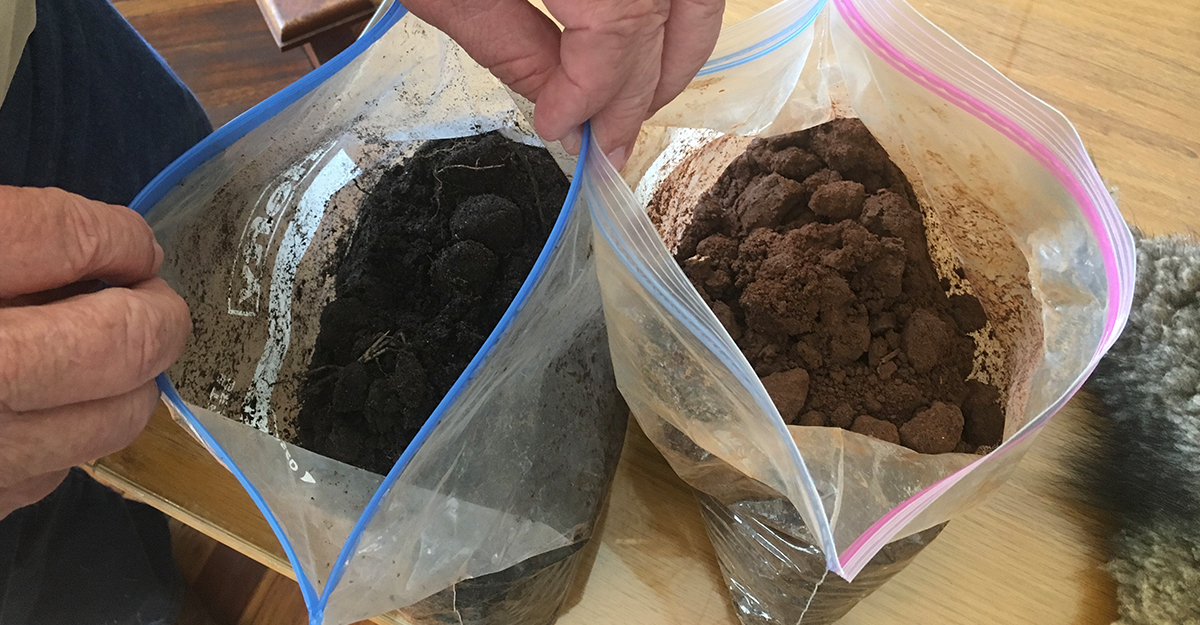Meet Our Meat (and Seafood): Thrive Market’s Program Is Creating a Better Food Future
Last Update: July 21, 2025
When biologist Allan Savory gave the keynote address at Slow Food USA’s Slow Meat Symposium in 2014, he called agriculture “the most destructive industry in the world.”
It’s no secret that industrialized farming—and meat production in particular—has had devastating effects on our environment. So, we set about developing a program that would give our members access to high-quality animal proteins that are raised ethically and sustainably. Today, we’re pleased to introduce you to Thrive Market Meat & Seafood.
Our program not only embraces our mission to democratize healthy eating, but sustainably provides for our growing population through innovative practices like regenerative agriculture, a holistic method of caring for the land. This alternative farming method actually helps combat climate change, soil degradation, and water runoff, keeping our soil and animals healthy for years to come. It’s just one of the many ways we’re working to revolutionize the industry from the ground up.
“Regenerative agriculture actually helps combat climate change, soil degradation, and water runoff, keeping our land and animals healthy for years to come. ”
At Thrive Market, we believe there’s always a better way to make wholesome, nutritious food accessible to everyone. Our new Meat & Seafood program is no exception. It embodies our commitment to our members and the planet, while offering the most exceptional protein selection available. We encourage you to explore our choice cuts and learn how every meal is an opportunity to make important decisions about our food future.
Meet Our Meat (and Seafood!)
All of our protein offerings adhere to the high standards we hold for all of the products sold on our site. They’re free of added hormones, antibiotics, dyes, and fillers. Our commitment extends to our facilities, too, where we run a 100% renewable energy warehouse that ranks as a Certified B-Corporation for environmental excellence. From working toward zero waste to practicing carbon-neutral shipping, our facility ensures that each order is prepared, packaged, and delivered in the most environmentally responsible way possible.
Every bundle of meat and seafood ships completely frozen and is packed for optimal freshness and minimal environmental impact. The foam-free thermal protective packaging uses biodegradable, cotton-enhanced insulation, made with super-absorbent fibers from recycled denim, to protect shipments from excess moisture, unwanted condensation, or spills. Our insulation also includes an EPA-approved antimicrobial additive to ward off cross-contamination.
Here’s a peek at what you can add to your cart:
Beef
All of our beef is sourced from lush pastures in either Australia or Uruguay. While other cattle are grass-fed but grain-finished, ours are 100% grass-fed, 365 days a year. The climate, land, and water create ideal conditions for nurturing stress-free herds, which produce healthy animals and bold flavors with a subtle nuttiness.

Pork
To keep both the hogs and the soil healthy, the animals are pasture-raised and encouraged to root and forage for food throughout their lives. Our farmers apply rotational grazing methods, allowing the pigs to move freely between pastures and wooded areas to feast on acorns, nuts, and grass, which helps nurture the topsoil. The result? Meat that has rich flavor and marbleized texture—and healthier farmland, too.

Poultry
Our free-range birds are no stranger to exercise and spend most of their lives outdoors to peck, climb, and flap freely the way nature intended. They’re raised and processed within a 50-mile radius, and each flock is certified organic, certified humane, and non-GMO project verified. Our pricing structure pays farmers fairly to raise healthy chickens without compromising quality.

Seafood
We’ve worked closely with key industry watchdogs to identify partners who catch sustainable and traceable seafood. Alaskan sockeye salmon is rich and buttery, while mild, tender cod flakes perfectly when cooked. Try barramundi for a a succulent and sustainable catch, or wild-caught scallops that contain no added chemicals and cook up sweet with delicate flavor. Finally, our shrimp comes peeled and deveined after being sustainably wild-caught off the shores of Mexico.
 Photo credit: Australis Aquaculture
Photo credit: Australis Aquaculture
As you can see, our partners share the belief that our planet, our families, and our animals deserve better than modern-day industrial farming practices, and are dedicated to a more sustainable, compassionate, and holistic approach to agriculture.
Thrive Market Meat & Seafood is our bold contribution to the kind of food future we dream about—one that supports our planet, disrupts the current system, and is made possible by incredible teamwork with our global partners.
How Factory Farming Impacts the Environment
Rather than nurturing the soil and animals that nourish us, current farming practices assert their own procedures, relying heavily on manufactured inputs like fossil-fuels, synthetic nitrogen, and pesticides to drive production and grow crops. Agricultural chemicals make their way into waterways, negatively impacting water quality, and occasionally, making it uninhabitable to marine life.
The practice of monoculture farming (growing a single crop, like corn, instead of diversifying and rotating crops in a way that prevents soil nutrient depletion), has been effective at creating a surplus of grains for animal feed, but degrades the quality of the soil, leading to erosion and diminished water retention. This industrialized mindset extends into animal welfare as well. Packing animals into tight spaces and restricting their movement enables the spread of disease and a poor quality of life.
Much of the greenhouse gas emissions generated by livestock occur through the production of grains used to feed the animals. According to the Food and Agricultural Organization of the United Nations (FAO) about one-third of all cereals on the planet go into animal feed, and by 2050, the number is predicted to be 50 percent. FAO also reports that to run these farms, the operations generate more greenhouse gas emissions than all forms of transportation combined, leaching into the atmosphere.
From Family Farms to Food Factories
You may be wondering how something as natural as feeding the population became so destructive. The simple answer is that the quest to boost farm productivity came at the cost of caring for the land. Treating the farms like food factories ended up being an effective short-term solution, but with dire long-term consequences.
Before WWII, communion with the land was common practice. Whether on a working farm passed down through generations or simply tending to a backyard garden, harmonizing the ecosystem—the wildlife, plants, and soil—resulted in nutrient-dense food.
An important aspect of sustainable agriculture is allowing animals to eat their natural diet, which means they’re better able to absorb nutrients from their food. Contrast that with some current practices in which cows live in crowded facilities, stand in their own waste, and consume a steady stream of corn (which they can’t digest very well). This abnormal diet throws off their pH balances and increases acidity, which can lead to numerous health problems like blood infections that require treatment with antibiotics.

While sustainable farming methods have never disappeared entirely, they’ve been overshadowed by the proliferation of factory farms and industrialized agriculture. In the decades since WWII, a seismic shift in food production occurred in response to the population boom. Greater portions of land were cleared for agricultural use and chemical fertilizers, pesticides, and herbicides were used to boost crop productivity. While this new approach to farming did help meet immediate demand for more food—and made it significantly more affordable—it’s diminishing our ability to provide for future generations.
Inexpensive grain gradually worked its way up the food chain, driving down prices so factory farms were able to buy grain for less than it cost to grow. By the 1950s, cattle ranchers began shipping animals to feedlots to be quickly fattened on these inexpensive, high-calorie grains. The government also began subsidizing commodity crops and creating a surplus by paying by the bushel for as much wheat, rice, corn, and soybeans as farmers could produce.
Viewing Soil as a Valuable Resource
Let this sink in: Just one cup of soil contains more microorganisms than there are people on the planet. As we look ahead, the best way to foster sustainable farming practices is to shift our gaze to the ground because the future of food begins, in large part, with our relationship to soil and the land.
Farmer, advocate, and writer Wendell Berry has called soil “the great connector of lives” and physician and professor Daphne Miller notes that soil’s rich biodiversity (like fungi, roundworms, and rock particles) make it more likely to produce nutrient-dense food. Unfortunately, our widespread use of chemicals—herbicides, pesticides, and fertilizers—destroys all the good stuff, leaving us with food that often reflects the diminished nutrient content of the soils from which it sprung.

The Soil Story reminds us that “the way we grow our food either puts carbon up into our atmosphere or pulls it down into the ground. The regeneration of soil is the task of our generation. Our health, the health of our soils, and the health of our planet are one and the same.” By turning our attention to the earth, we can help restore ecosystems, increase biodiversity, and improve water quality. Healthy soil can also help reduce greenhouse gases by pulling carbon from the atmosphere and storing it underground.
“The single greatest lesson the garden teaches is that our relationship to the planet need not be zero-sum, and that as long as the sun still shines and people still can plan and plant, think and do, we can, if we bother to try, find ways to provide for ourselves without diminishing the world. ”
―Michael Pollan, The Omnivore’s Dilemma: A Natural History of Four Meals
Another way to help regenerate soil is by moving multiple species of livestock through pasture land on a regular basis. This practice—known as rotational grazing—encourages the overall health of the farmland, as the animals naturally aerate, fertilize, and prep the soil for regrowth. Rotational grazing promotes pasture productivity and forage quality, which increases the natural storage of carbon (or carbon sequestration) in the soil. This sequestered carbon helps counter global warming by offsetting the carbon emissions released through burning fossil fuels, land clearing, and deforestation.
Ultimately, the answer to our current environmental crisis lies, in part, in a pronounced return to the farming traditions of our forefathers. And that’s why Thrive Market’s Meat and Seafood program is so much more than another way to deliver high-quality, nourishing foods to our members—it’s also an opportunity to support sustainable agricultural practices.
We made it our top priority to seek out partners dedicated to regenerative farming, rotational grazing, sustainable fishing, and the ethical treatment of animals because when we put our food, our families, and our planet first, we all thrive.
We believe that each of us holds the power to help change the food system for the better. By simply buying our food from farms that champion holistic philosophies—we can help combat climate change, restore our resources, and vote with our forks for the kind of food future we hope to leave behind for generations to come.